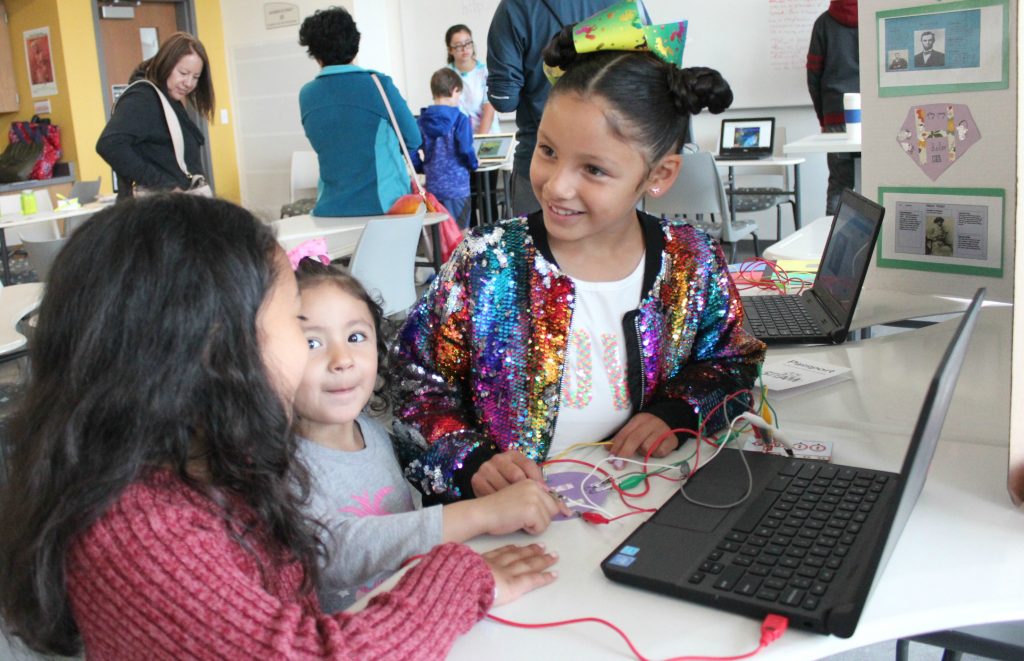Janessa Gallardo, 8, a student from Kathryn Hughes Elementary School, calmly demonstrated how to insert a finger enclosed through a loop formed by a rubber band to power a Makey Makey circuit board.
Gallardo’s exhibit was one of many student projects shown at Mission College during the May 18 STEAM Expo. According to Niall Adler, Mission College’s Director of Marketing and Public Relations, about 3,000 students participated in this event that brought attention to science, technology, engineering, art and math.
“We have bright, innovative students and staff in Santa Clara Unified. I am proud of the first Annual STEAM Expo, which is a collaboration between our district and Mission College,” said Dr. Stan Rose, Superintendent of the Santa Clara Unified School District. “We are preparing all of our students for success in an ever-changing world and working hard to build strong partnerships with Silicon Valley’s businesses and leaders to ensure a future-ready workforce.”
Karen Gwerder, Garden Coordinator and parent at Central Park Elementary School, showed how school lunches can be converted to compost.
“This is an example of the three bin system we have set up in our garden,” Gwerder said.
“In the first container are the fresh lunch scraps, such as banana peels, apple core and strawberry tops, and their torn up lunch trays made from a biodegradable paper material,” continued Gwerder. “Once the first bin is filled, we move it to the second bin where it sits for a few months. In the third bin is the composted soil that is made from what was inside the second bin. We use this in our garden to improve our soil quality.”
At her center, Shakthi Sivasankar, 12, a student at Don Callejon School, oversaw an activity where students painted their own salt pond with various hues of watercolor. “Salty Science: From Natural Resource to Ecosystem Restoration” was the title of Sivasankar’s project.
“Every color in these salt ponds represents a different salinity level. There are colors that vary from red to orange to green in San Francisco’s salt ponds,” Sivasankar said of the San Francisco Bay salt ponds. “When the salinity level increases in a salt pond, the bacteria in the water changes color, which changes the color of the salt water. When the salinity level increases, bacteria changes color mostly to red. The salt you see in the salt pond is evaporated salt.”
Speaking of the San Francisco Bay, a class at Washington Open Elementary School showed their colored pencil drawings combined with watercolor depicting the Golden Gate Bridge.
“This is a project the fourth-graders, fourth-grade teacher Andrea Burrows and I collaborated on for several months at the beginning of the year leading up to their field trip when they sketched on site in San Francisco at the Golden Gate Bridge,” said Jennifer Johnson, art instructor at Washington Open.
“Students learned about principles of perspective in art work, such as creating depth,” continued Johnson. “They learned about relative size, the idea that some subjects are closer and therefore bigger, and objects that are farther away are smaller. They also learned about value, how subjects that are closer are darker. Students got their reference photographs and measured with rulers the difference in height between the first and second tower of the Golden Gate Bridge.”
